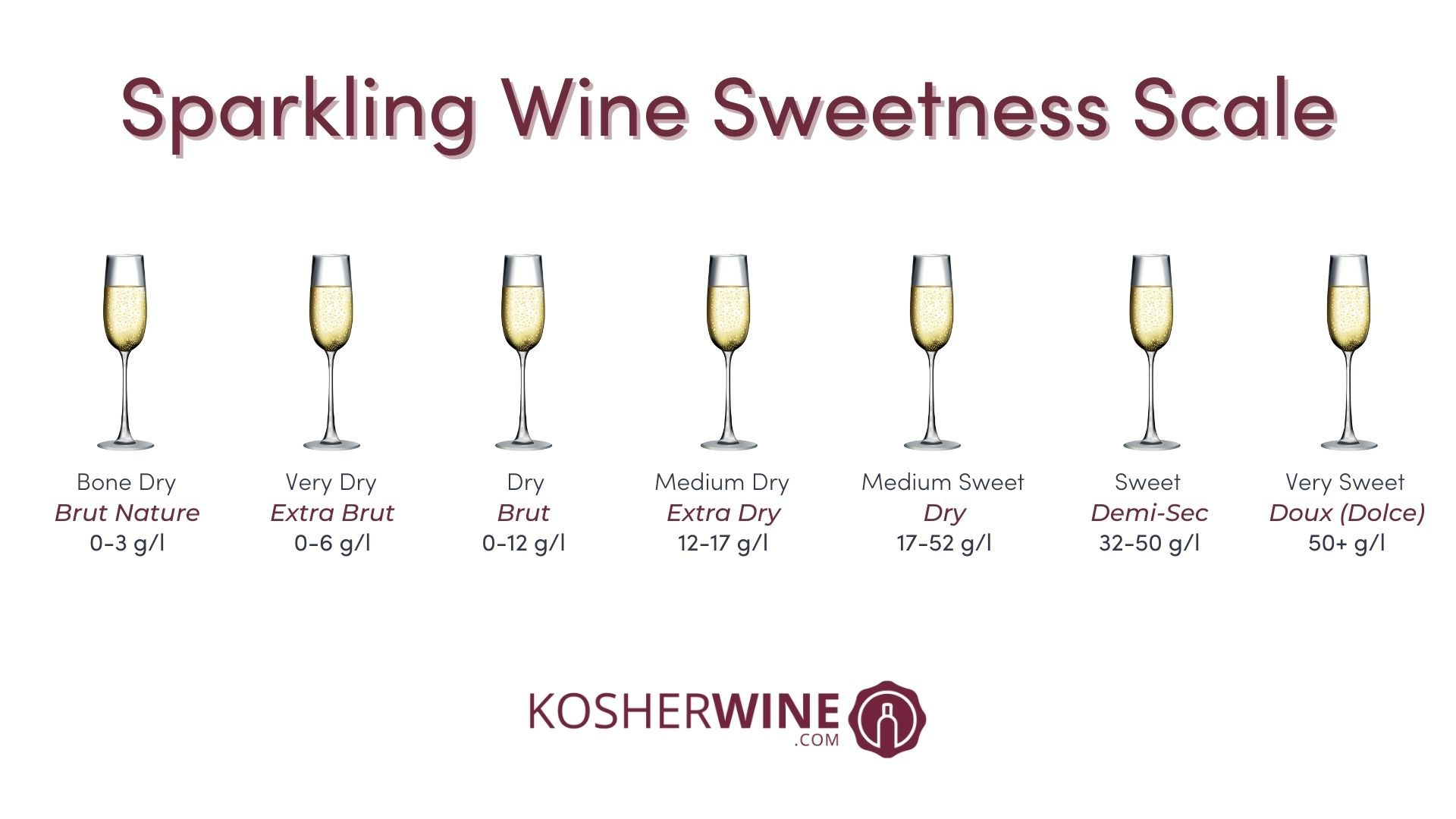All About Sparkling Wine
Write your awesome label here.
Whether you're celebrating a birthday, wedding, or bar mitzvah, there's something about a good sparkling wine that just makes any occasion feel special. However, the whole category of understanding sparkling wines can often seem intimidating.
What's the difference between champagne and prosecco? And what is cava, anyway?
This post will demystify sparkling wine for you, so you can confidently order a glass (or bottle!) next time you're out. We'll cover the basics of how sparkling wines are made and talk about the main types available on shelves today. By the end, you'll know exactly what to ask for when you want a little fizz in your life.
What is sparkling wine?
For being such a pretty, bubbly beverage…sparkling wine can be one of the most challenging types of wine to produce. Because sparkling wine of any type requires bubbles…the wine has to undergo two fermentation processes…whereas still wine only requires one. Plus, there is a large degree of winemaker choice from production method, aging, blending and sweetness levels that can really impact the final wine.
What's the difference between champagne and prosecco? And what is cava, anyway?
This post will demystify sparkling wine for you, so you can confidently order a glass (or bottle!) next time you're out. We'll cover the basics of how sparkling wines are made and talk about the main types available on shelves today. By the end, you'll know exactly what to ask for when you want a little fizz in your life.
What is sparkling wine?
For being such a pretty, bubbly beverage…sparkling wine can be one of the most challenging types of wine to produce. Because sparkling wine of any type requires bubbles…the wine has to undergo two fermentation processes…whereas still wine only requires one. Plus, there is a large degree of winemaker choice from production method, aging, blending and sweetness levels that can really impact the final wine.
Is all Sparkling Wine Champagne?
Now..here is the ‘kicker”…all Champagne is sparkling wine. BUT, not all sparkling wine is champagne. Champagne is actually a region in Northern France that has very strict regulations as to how their sparkling wine is made. For example, only grapes grown in the designated region can be used,and there is a very short list of what those grapes can be with Chardonnay and Pinot Noir leading the pack. On top of this there are limits as to how much of the grapes can be permitted to harvest and press…and then how much needs to be on reserve for future vintages to maintain consistency with a ‘house style.” Only when all of these regulations are met, can the term “ champagne” be used on the label. Basically, think of Champagne like a “brand name” for sparkling wine.
What is Cava?
Whereas other types of sparkling wine are made, and those names can still give clues as to the region and method of winemaking. Champagne uses a traditional method of winemaking. There are multiple steps from start to finish but the crux of this method is that the second fermentation we talked about earlier…happens in the bottle. The other type of sparkling wine made with this method…is Cava. Cava is a Spanish wine that can be made from either chardonnay or pinot noir, but it's typically enjoyed with native grapes like parellada and xarel-lo. Originally, Cava was produced only in Catalonia…and even though that remains the predominant region for Cava in Spain, it doesn’t HAVE to be produced there and nowadays its produced throughout the country in regions like Rioja, Navarra, Valencia, Aragon and Pais Vasco. Cava is typically not aged on the lees for as long as champagne., Lees is basically left over yeast particles and sediment generated during fermentation. So, the biggest difference is that you may experience more citrusy, lime-like notes out of a Cava, versus bready-toasty notes from a Champagne.
What Is Prosecco?
Produced from the Veneto region of Italy, Prosecco uses a completely different grape called Glera and the wine is produced using a slightly different method. Though the process starts out the same as Champagne and Cava, Prosecco actually undergoes its second fermentation in tanks. Then, the yeast and sediment is filtered out of the wine before the wine is bottled via a pressurized system. This creates a wine that is slightly less acidic than your Cava and Champagnes of the world, with more green fruit on the nose…like pear or honeydew and no noticeable bready-traits…but still a nice creamy texture…and similar fizz.
Are there other sparkling wines in addition to Champagne, Cava and Prosecco?
Other regions will also have their versions of sparkling wine like Method Cap Classique, South Africa’s sparkling wine using the traditional method, or Cremant— which can apply to a number of French sparkling wines outside of champagne that offer similar characteristics at great value— Alsace, Loire Valley and Burgundy to name a few.
What is Asti?
You may also see the term Asti used…often with Moscato as this method is generally used to produce sweet, fruity wines. The juice is generally chilled and stored until production is needed and then a single tank is used and pressurized to generate and control the carbon dioxide generation to produce bubbles.
Is all Sparkling Wine Sweet?
As far as sweetness goes, sparkling wine does use terms that differ from still wine, but most do follow the scale adopted to describe the sweetness levels of Champagne with Brut Nature being bone dry, all the way up to doux ( or dolce) as being very sweet—generally over 50 g/l of residual sugar .
Now..here is the ‘kicker”…all Champagne is sparkling wine. BUT, not all sparkling wine is champagne. Champagne is actually a region in Northern France that has very strict regulations as to how their sparkling wine is made. For example, only grapes grown in the designated region can be used,and there is a very short list of what those grapes can be with Chardonnay and Pinot Noir leading the pack. On top of this there are limits as to how much of the grapes can be permitted to harvest and press…and then how much needs to be on reserve for future vintages to maintain consistency with a ‘house style.” Only when all of these regulations are met, can the term “ champagne” be used on the label. Basically, think of Champagne like a “brand name” for sparkling wine.
What is Cava?
Whereas other types of sparkling wine are made, and those names can still give clues as to the region and method of winemaking. Champagne uses a traditional method of winemaking. There are multiple steps from start to finish but the crux of this method is that the second fermentation we talked about earlier…happens in the bottle. The other type of sparkling wine made with this method…is Cava. Cava is a Spanish wine that can be made from either chardonnay or pinot noir, but it's typically enjoyed with native grapes like parellada and xarel-lo. Originally, Cava was produced only in Catalonia…and even though that remains the predominant region for Cava in Spain, it doesn’t HAVE to be produced there and nowadays its produced throughout the country in regions like Rioja, Navarra, Valencia, Aragon and Pais Vasco. Cava is typically not aged on the lees for as long as champagne., Lees is basically left over yeast particles and sediment generated during fermentation. So, the biggest difference is that you may experience more citrusy, lime-like notes out of a Cava, versus bready-toasty notes from a Champagne.
What Is Prosecco?
Produced from the Veneto region of Italy, Prosecco uses a completely different grape called Glera and the wine is produced using a slightly different method. Though the process starts out the same as Champagne and Cava, Prosecco actually undergoes its second fermentation in tanks. Then, the yeast and sediment is filtered out of the wine before the wine is bottled via a pressurized system. This creates a wine that is slightly less acidic than your Cava and Champagnes of the world, with more green fruit on the nose…like pear or honeydew and no noticeable bready-traits…but still a nice creamy texture…and similar fizz.
Are there other sparkling wines in addition to Champagne, Cava and Prosecco?
Other regions will also have their versions of sparkling wine like Method Cap Classique, South Africa’s sparkling wine using the traditional method, or Cremant— which can apply to a number of French sparkling wines outside of champagne that offer similar characteristics at great value— Alsace, Loire Valley and Burgundy to name a few.
What is Asti?
You may also see the term Asti used…often with Moscato as this method is generally used to produce sweet, fruity wines. The juice is generally chilled and stored until production is needed and then a single tank is used and pressurized to generate and control the carbon dioxide generation to produce bubbles.
Is all Sparkling Wine Sweet?
As far as sweetness goes, sparkling wine does use terms that differ from still wine, but most do follow the scale adopted to describe the sweetness levels of Champagne with Brut Nature being bone dry, all the way up to doux ( or dolce) as being very sweet—generally over 50 g/l of residual sugar .

Is champagne worth the price point and the hype?
This is always the big question and the answer is a bit of yes and no. If you are prepared to pay $60 or more dollars for a great champagne from a premier producer, you are going to experience a higher level of quality, complexity and even ageworthiness. Prosecco, cava, lower-end champagne and anything with higher levels of sugar are generally meant to be drank young…within 1-3 years. So, if you are toasting to the new couple in two months or mixing in orange juice for brunch, Cava and Prosecco will be friendlier on your wallet while still giving the celebratory feel of the occasion.
This is always the big question and the answer is a bit of yes and no. If you are prepared to pay $60 or more dollars for a great champagne from a premier producer, you are going to experience a higher level of quality, complexity and even ageworthiness. Prosecco, cava, lower-end champagne and anything with higher levels of sugar are generally meant to be drank young…within 1-3 years. So, if you are toasting to the new couple in two months or mixing in orange juice for brunch, Cava and Prosecco will be friendlier on your wallet while still giving the celebratory feel of the occasion.


